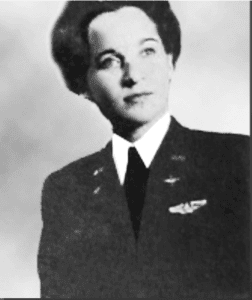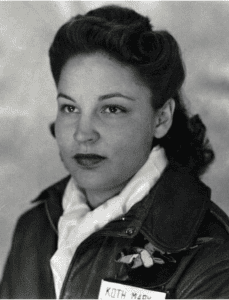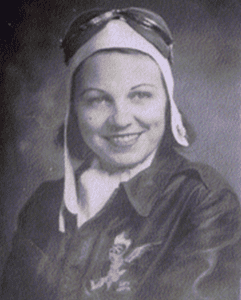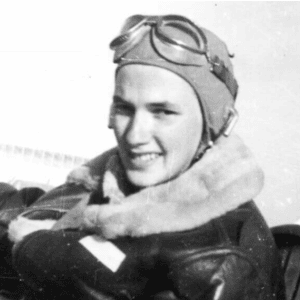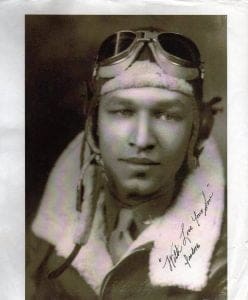 Isadore M. “Ike” Robinson
Isadore M. “Ike” Robinson
December 29, 1921 ~ January 21, 2016
For many of the Tuskegee Airmen their time in the U.S. Army Air Corps was only a part of their own personal story. Many of the airmen went to live very full and spectacular lives. Some stayed in the military and became high ranking officers while others went into the civilian sector and made the changes that we are thankful for today.
Below is an article about Tuskegee Airman Isadore “Ike” Robinson by Tribune, Ames Iowa dated Feb 26, 2011 written by Laura Milsaps, staff writer.
Sitting in a chair in his home in west Ames, Isadore “Ike” Robinson held onto a lifetime of stories and accomplishments in the form of two pieces of memorabilia: a photo of him in his Army Air Force uniform and a copy of his master’s thesis, the paper still crisp after all these years.
Robinson, 89, is a World War II veteran and retired microbiologist. Robinson is a gentleman. His shirt is pressed, his handshake is warm and strong, and his smile charming.
When a photographer showed up Thursday afternoon, he went to get an extra chair for her. Even after years in Iowa, he and his wife, Wilma, both still speak in the gentle tones of their native West Virginia.
Robinson suffered a stroke years ago, and speaking is difficult for him. His best friend and colleague, Milt Allison, and Wilma Robinson joined him in the living room to talk. She was there because one of his daughters, Cindy Robinson, had phoned to tell The Tribune about her dad.
“I think he’s a remarkable man,” she said. “Not just because he’s my dad, but because of all he’s accomplished.”
Robinson retired from the National Animal Disease Center in Ames in 1987, after a decades-long career studying bacteria in the rumen of cattle and sheep.
Allison, still an affiliate professor of animal science at Iowa State University, met Robinson at the then-named USDA Dairy Cattle Research Branch in Beltsville, Md., when Robinson joined as a researcher in 1957. They’ve worked together ever since, both of them moving to the National Animal Disease Center in Ames in the 1960s.
“What set Ike apart almost immediately was his work ethic. He was an extremely diligent scientist,” Allison said of his colleague as they handed academic papers back and forth during the interview. “He was also good with his hands. The methods we used back then, with glass needles to extract the bacteria, were very delicate, and Ike had unusually good dexterity. It was almost a gift in a way.”
With those same hands, Robinson presented a copy of his master’s thesis, “Isolation and Characterization of Anaerobic Mycoplasmas from the Rumen,” to the reporter. He earned a master’s degree from ISU in 1973. Though he can no longer describe his work, it is there to see.
“It’s an extremely small field of study,” Allison said.
Robinson went on to author or co-author more than 50 papers on the subject, many of them partnered with Allison. Allison and Wilma Robinson both described Ike Robinson as a world authority on the subject, making work-related trips to Germany, France and Japan.
In 2009, a group of scientists with the Agricultural Research Service in Peoria, Ill., named a newly discovered bacterial species after Robinson, in honor of his life of research. Robinsoniella peoriensis was first isolated in swine, but Allison said the bacteria also have been found in diseased human tissue, and its existence opens up new possibilities for research.
Robinson was working on a degree in biology in his hometown of Bluefield, W.Va., when World War II began. He interrupted his education to join the Army Air Force, and trained at the Tuskegee Army Air Field in Alabama.
He achieved the rank of a corporal, and served with the 10th Aviation Squadron in Florence, S.C., as a medical technologist. In 2007, when President George W. Bush honored the Tuskegee Airmen, Robinson was one of them. Though he was unable to attend the Washington, D.C., ceremony, his Congressional Gold Medal is there in his living room, too.
After the war, he completed his college degree, and worked in Hinton, W.Va., as a high school biology teacher. It was there that he met Wilma.
“I saw him,” she said with a little smile, gesturing at his handsome service photo, “and I thought, ‘Now that’s it.’” They were married in 1956. They have four daughters, including Cindy, and Ike Robinson has two daughters from a previous marriage.
“You have a daughter in California who’s awfully proud of you,” the reporter said as she and the photographer packed up to leave.
“Yes. I know,” said Robinson as he smiled his warm smile.
Additional sources:
Gearty-Delmore Funeral Chapels


